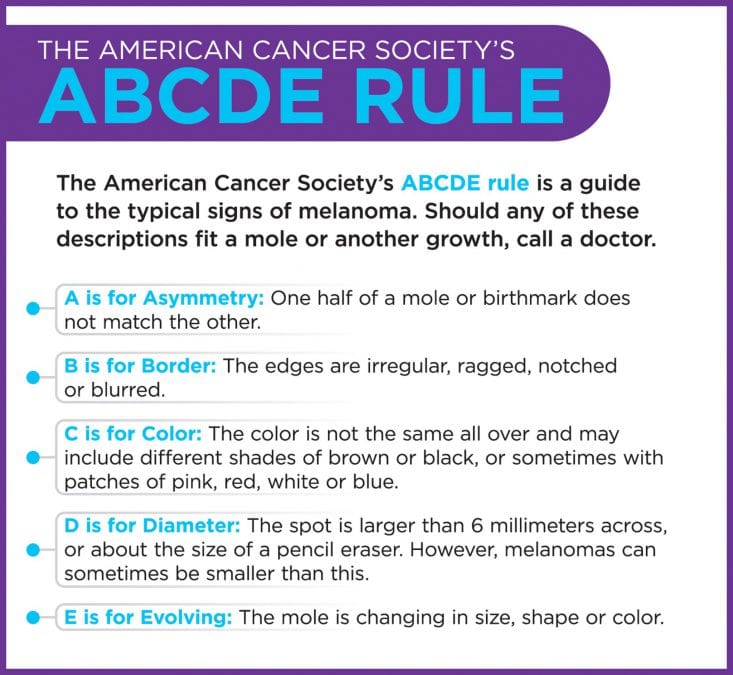By Lenzy Krehbiel-Burton
It may be uncomfortable in the summer heat, but a long-sleeved shirt can go a long way toward cancer prevention.
Melanoma is a form of skin cancer that occurs when melanocytes, the cells responsible for skin pigmentation, start growing uncontrollably. Extended repeated exposure to ultraviolet radiation — either from the sun or artificial light sources like tanning beds — can damage the cells’ DNA enough to expedite that process.

Among the key warning signs of melanoma or other forms of skin cancer are the appearance of new or unusual growths, such as moles, lumps or blemishes that do not look like those already on one’s body.
For women, most growths start on the legs, while for men, they are more likely to show up on the chest or back. However, a melanoma growth can develop anywhere on the body, including the mouth, scalp, iris or under the fingernails.
Mark Beutler is a spokesperson for the Oklahoma chapter of the American Cancer Society. Like most forms of cancer, early detection is the key to beating the disease, he said. Melanoma has a five-year survival rate of 99 percent if caught before it spreads beyond the patch of skin where it started.
“Melanoma can often be found early, when it is most likely to be cured,” Beutler said. “Some people have a higher risk of getting melanoma than others, but it’s important to know that anyone can get melanoma.
“Knowing your own skin is important to finding skin cancer early. You should know the pattern of moles, blemishes, freckles and other marks on your skin so that you’ll notice any new moles or changes in existing moles.”
According to statistics published by the Centers for Disease Control and Prevention, Oklahoma had 964 new cases of melanoma in 2017, the most recent year for which data is available. That works out to 21.7 cases for every 100,000 residents, compared to the national rate of 22.7 for every 100,000 people. Nationwide, it is the sixth most common form of cancer, trailing breast, prostate, lung, colorectal and uterine.
Among American Indians and Alaska Natives, the rates are even lower, both nationally and in Oklahoma. Nationwide, the rate of melanoma cases is five for every 100,000 Indigenous people, while in Oklahoma, it is 13.3 for every 100,000 Indigenous people.
However, Oklahoma and California are the only two states with enough Indigenous melanoma cases reported to generate a data set.
Although there is not a fool-proof way to completely safeguard against developing melanoma, there are preventative measures that can be taken to minimize the risk. Along with a long-sleeved shirt, a hat and sunglasses can help minimize exposure to ultraviolet rays. Regularly applying sunscreen can also help reduce the risk, particularly when the long-sleeved shirt option is not feasible.
“Bottom line is to be sun-safe anytime you are outdoors,” Beutler said. “Being outside in the fresh air is good for the soul, but the summer sun can be relentless.”
